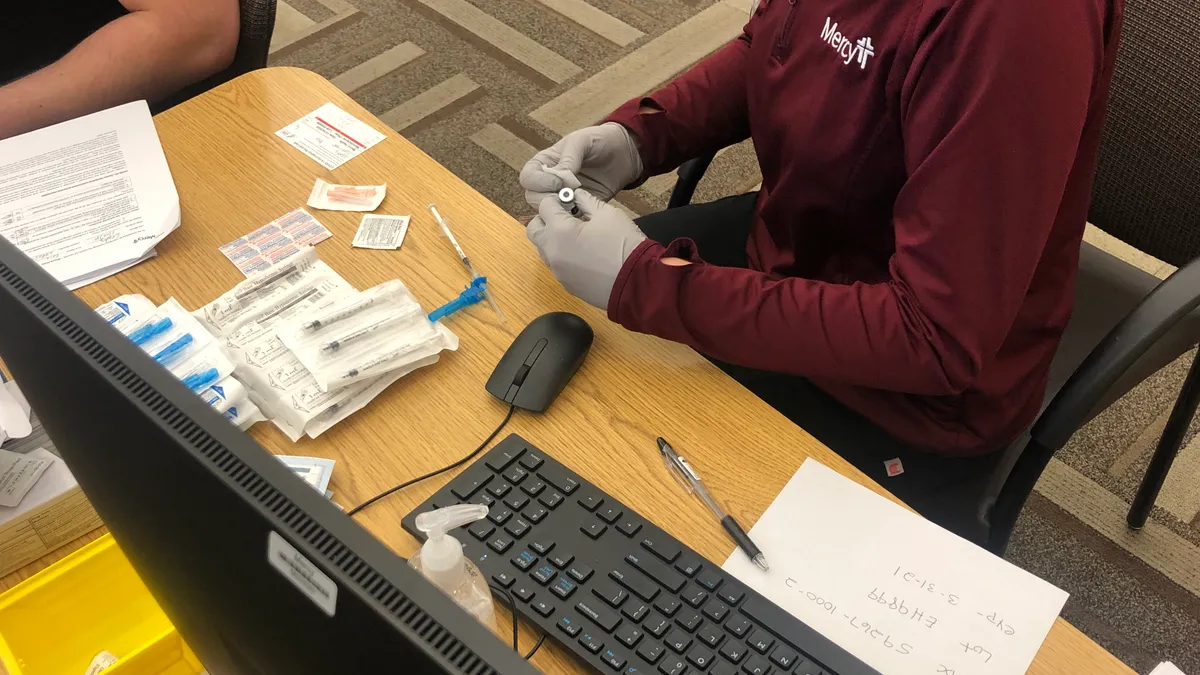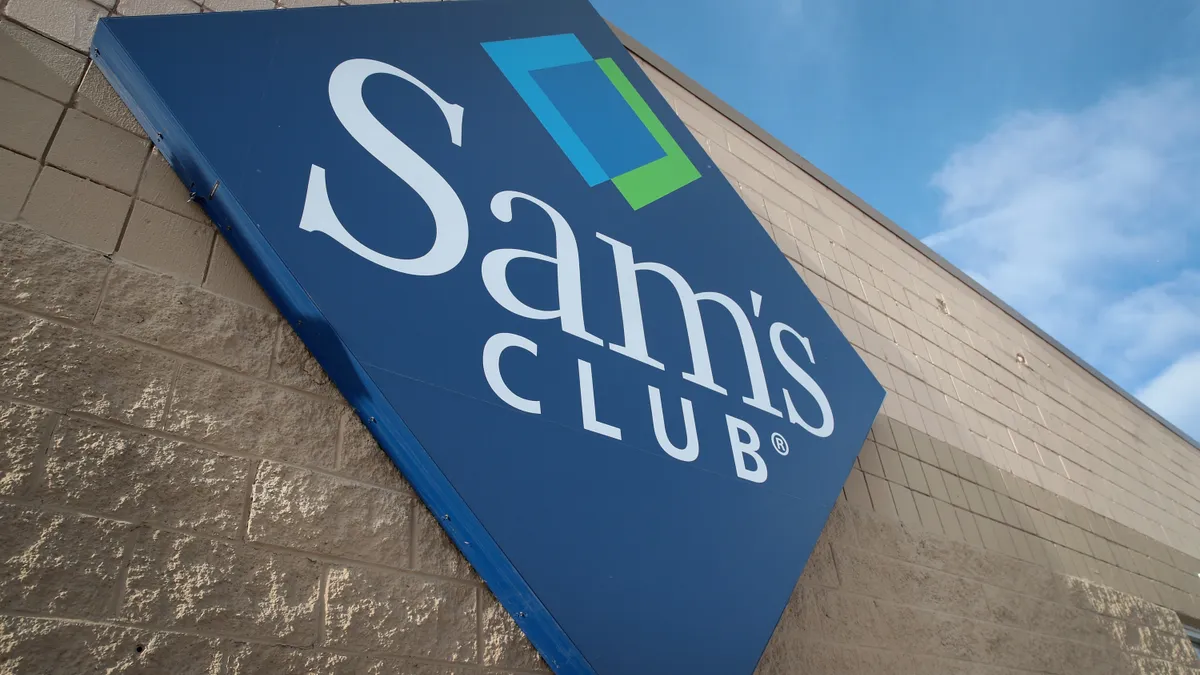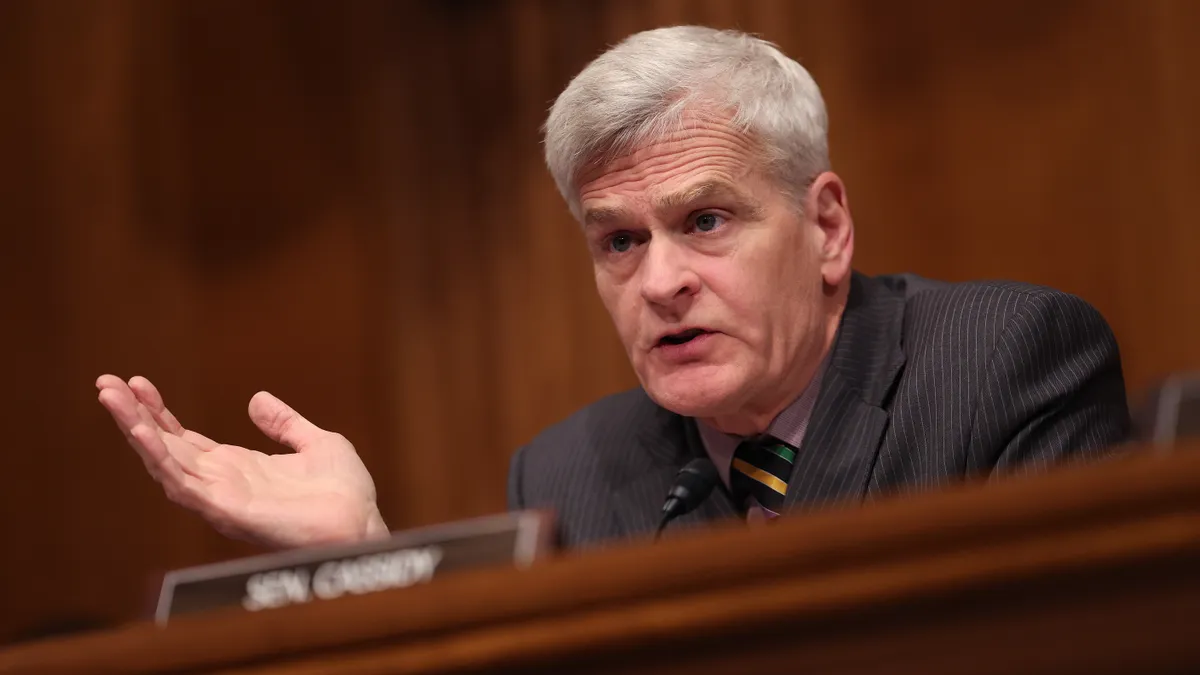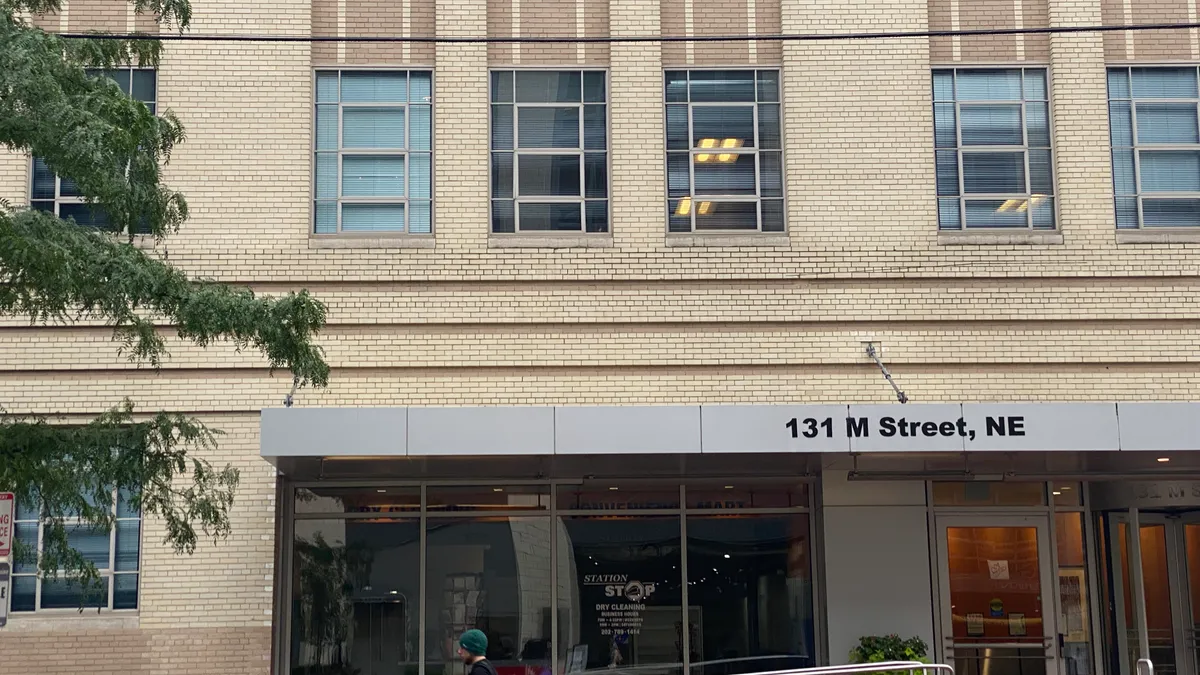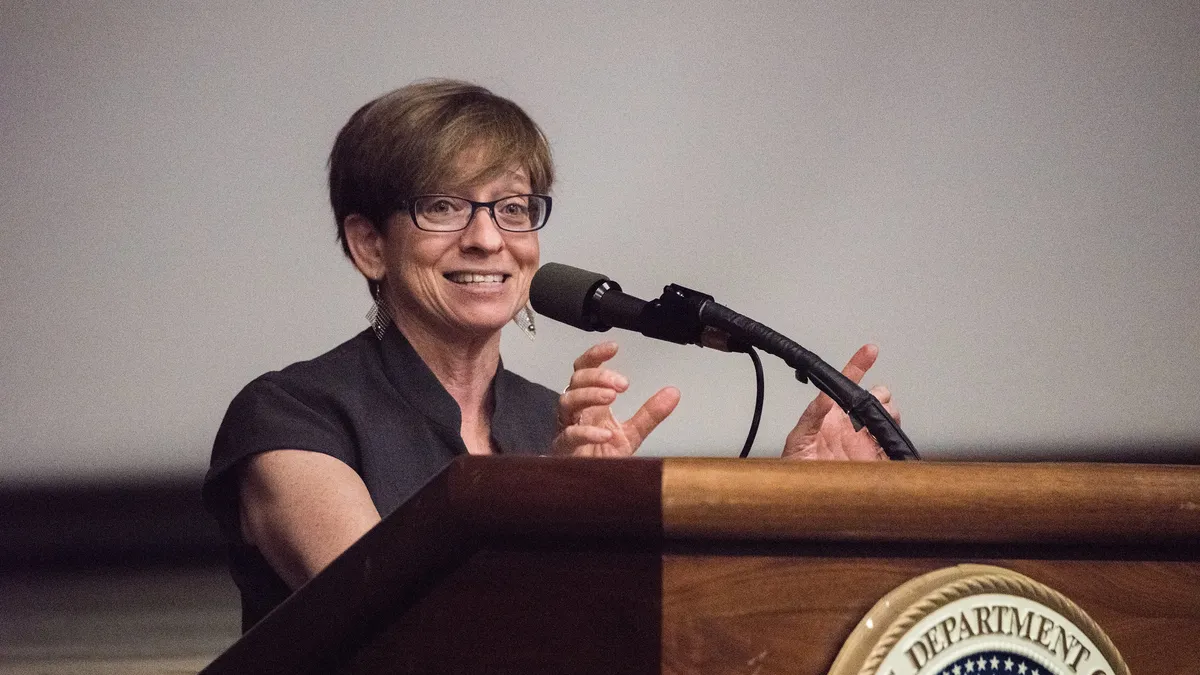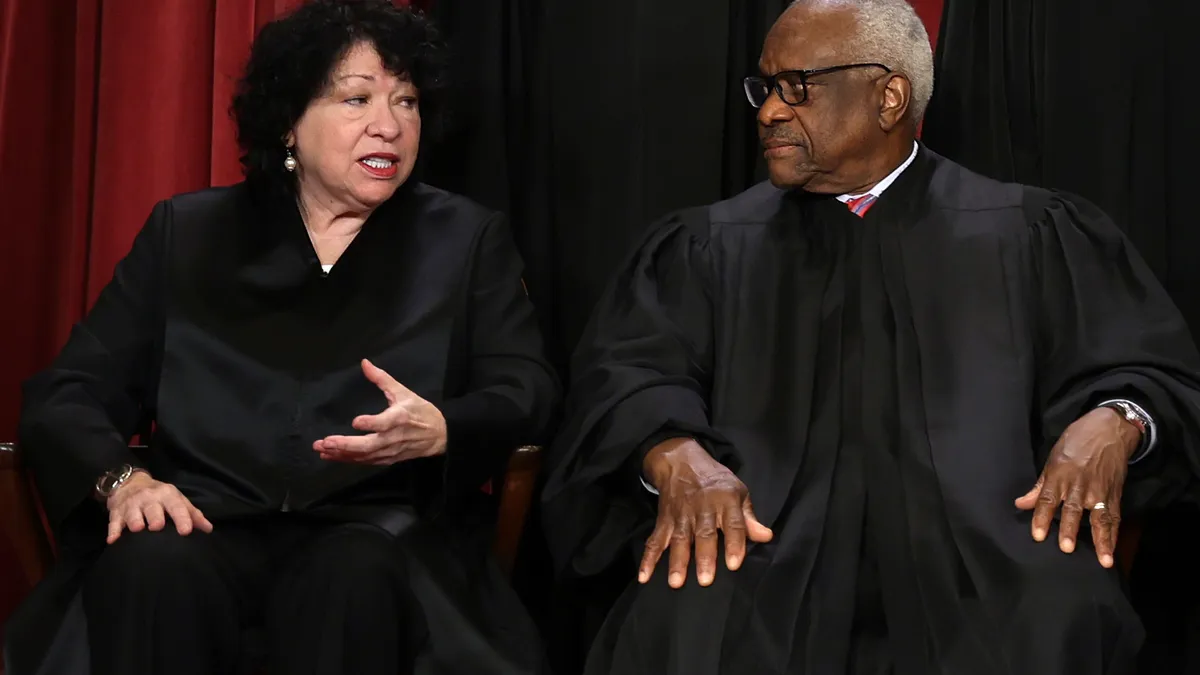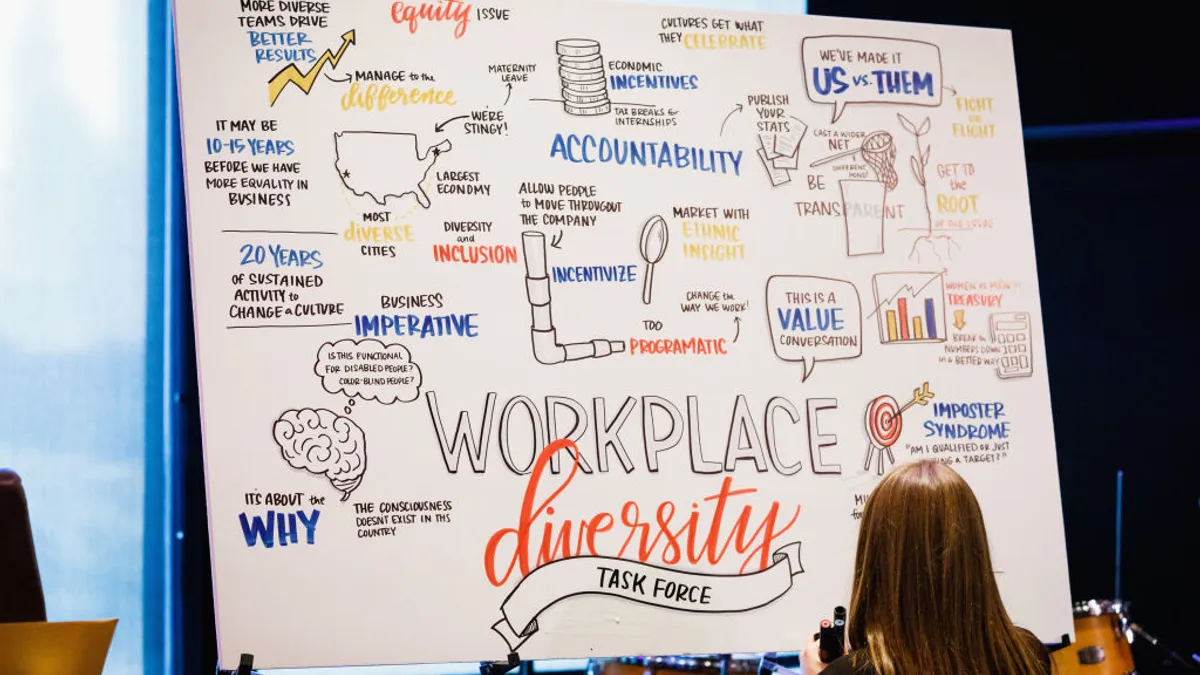Certifications for Family and Medical Leave Act (FMLA) leave continue to challenge employers in all industries, especially as the coronavirus pandemic continues, according to the Disability Management Employer Coalition (DMEC).
The FMLA provides eligible employees up to 12 weeks of unpaid, job protected leave in a 12-month period in which they are unable to work due to serious health conditions or because they are a caregiver for a family member with a serious health condition.
The Biden administration will most likely increase enforcement of FMLA leave administration procedures through both on-site and virtual investigations, Ellen McLaughlin, a partner at Seyfarth Shaw, said during a Jan. 27 National Employment Law Institute webinar, HR Dive previously reported. President Joe Biden tweeted Feb. 4 that the FMLA has helped many Americans "but it leaves far too many people forced to choose between a paycheck and caregiving." Biden has advocated for a national paid family and medical leave program.
As decisions are being made at the federal level, HR practitioners continue to seek guidance on FMLA certification procedures. In a webinar hosted by DMEC Feb. 4, Bryon Bass, senior vice president of workforce absence at Sedgwick, shared answers to many questions posed by HR practitioners during DMEC's 2020 webinar on FMLA. Here are the answers to five pressing questions that can assist HR amid the pandemic.
Do positive COVID-19 test results qualify an employee for FMLA leave?
If an employer has any type of notice that an employee may be FMLA qualified, it is the employer's duty to send rights and responsibilities information along with a certification request to that employee within five days of learning of that need, Bass said. Employers must give 15 calendar days to provide such certification, he added.
However, if an employer "receives medical notes or test results from COVID-19 that indicate an individual has tested positive, then we know that [the Centers for Disease Control and Prevention] requires or recommends that an individual will quarantine for a minimum of 10 days," Bass said.
If the employee is unable to work from home because they have a job in an essential industry that requires them to be in the work environment, for example, then they qualify from an FMLA perspective, he said. "You have enough information to indicate that they have a serious health condition; they have tested positive for COVID-19," Bass said; and in that case, an employer wouldn't need to ask for a certification form to be filled out, "you can just send them the rights and responsibilities information, along with the designation notice."
If there is any continued need beyond the 10 days of quarantine, "then yes, you should have that followed up with some form of extension or medical notes or certification form that can be provided by the healthcare provider," he said.
Does an employee need to have two or more visits in a treatment plan to qualify for FMLA if they test positive for COVID-19?
"The answer to that question is 'no,'" Bass said. "There are other provisions in the FMLA, and there's also case law out there that indicates that obtaining testing to determine whether or not an individual has a serious health condition is covered without the two visit treatment or the two visit aspect. It's also important to recognize that the employee is expected to notify their healthcare provider if they have a COVID-19 positive diagnosis."
Under the FMLA, "a serious health condition is an illness, injury, impairment, or physical or mental condition that involves inpatient care or continuing treatment by a healthcare provider," according to the DOL. For an individual that is out of work for more than three consecutive, full calendar days, the treatment must include two or more visits to a health care provider within 30 days or one visit to a provider within seven days, if the visit results in continuing treatment.
The health care provider is likely going to follow up with that individual, Bass said. The DOL has also relaxed requirements of in-person evaluations and treatments, he added; televisits are now covered and qualify as the in-person visit. Bass also recommended that employer seek out state-level information; some states, such as Ohio, prohibit employers from asking for documentation related to COVID-19, or related to respiratory illness, he said.
How do electronic notifications fit into a 15 calendar day response time?
DOL indicates that the clock does not begin until it's reasonable to assume the employee has received the notice, Bass said. "We all could all take a step back and say, ‘Well, if I send it through email, it should be reasonable for me to assume that they received it almost immediately,'" he said. "I think that you, like myself, have run into situations where someone has said they've emailed something, and I've never received it or went to a junk folder, or it got lost somewhere in cyberspace land. That happens. So we need to be reasonable about understanding that and account for that."
As a practical administrative matter, it is advisable to be consistent and provide the additional five days, no matter the method of distribution, Bass said. In Gardner v. Detroit Entertainment, LLC, dba MotorCity Casino, the U.S. District Court for the Eastern District of Michigan found the employer could not prove the employee received notifications via email, he said.
What if an employee uses something other than the provided certification form to give information?
Employers cannot refuse a certification that is not completed on the company's standard form, Bass said. They must accept a complete or sufficient certification, no matter the format, such as a fax or a copy of the certification, or any other record of medical documentation, including a note on the letterhead of a healthcare provider, he said.
"There is no requirement to use the model optional forms that are provided by the [DOL]," Bass said. He continued, "My opinion is that the model forms are a great reference point for usage. However, even with the most recent updates, many of us still find them cumbersome and difficult. And they still are resulting in a significant number of clarification or incomplete responses. Therefore, if there's something that you feel you could add some clarity about within the forms itself, as long as you're not asking for more information than you're allowed to, as specified under [FMLA sections] 306, 307 or 308, you can use whatever form and whatever format you would like to use."
How can employers trigger the recertification process?
An employer can request recertification no more than every 30 days, and only jointly with an absence of the employee, unless the medical certification indicates that the minimum duration of the condition is more than 30 days, according to Bass. If that is the case, then an employer must wait until the minimum duration expires before requesting a recertification, he said.
An employer can request a recertification of a medical condition every six months in connection with an absence by the employee — in all cases, Bass said. Even if the medical certification indicates that the employee will need a reduced schedule leave for a period of more than six months, the employer would be permitted to request recertification every six months in connection with an absence, according to Bass.
On the other hand, an employer can request recertification in less than 30 days if an employee requests an extension of leave; circumstances around the previous certification have change "significantly" such as the duration or amount of the absences or established patterns begin; or if the employer receives information that casts doubt upon the employee's stated reason for the absence or the continuing validity of the certification, he explained. Employees must also be given 15 calendar days to return the certification; if it is not returned, leave can be denied.



